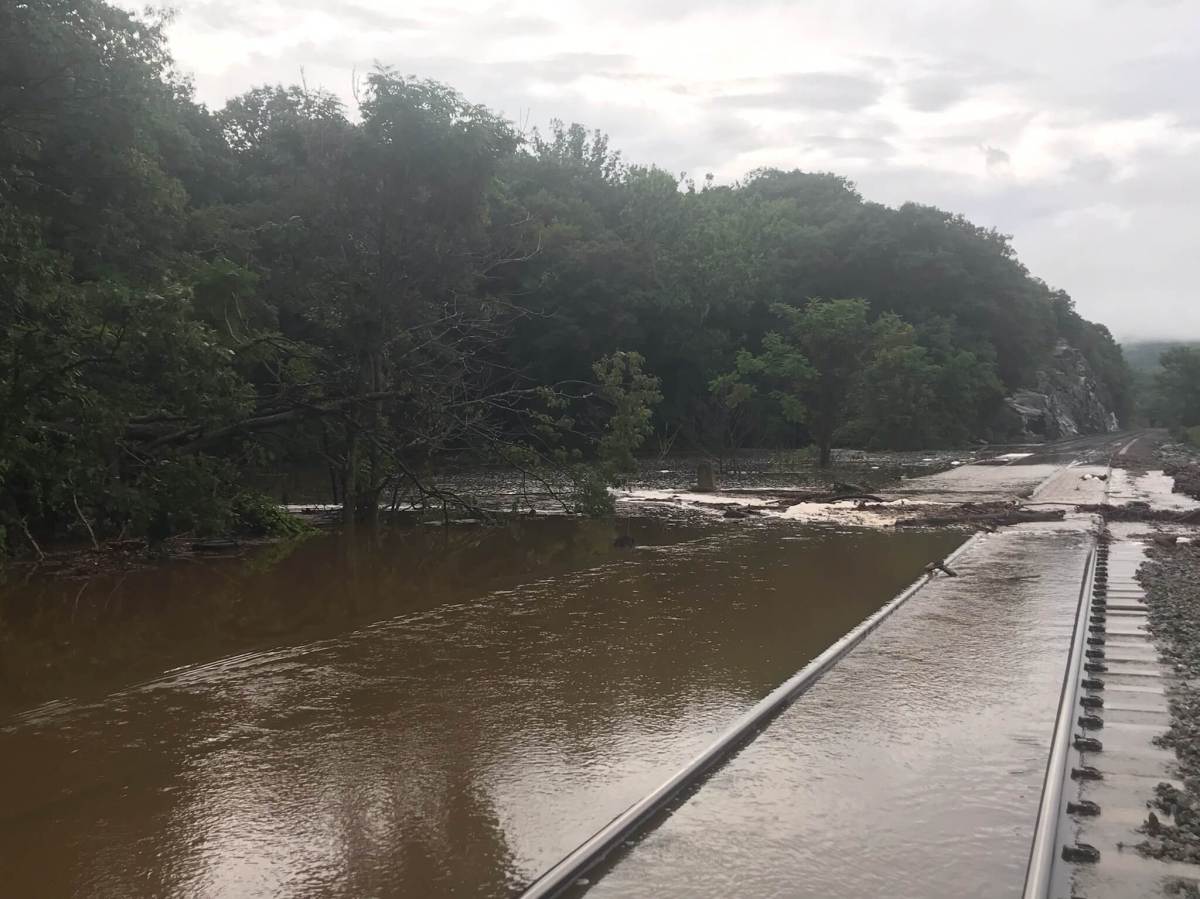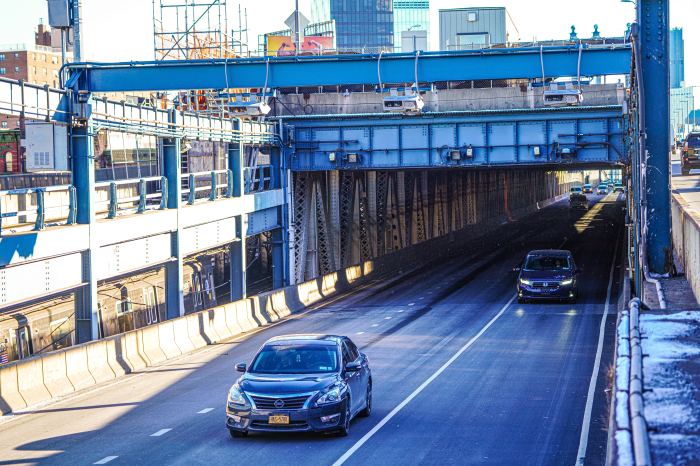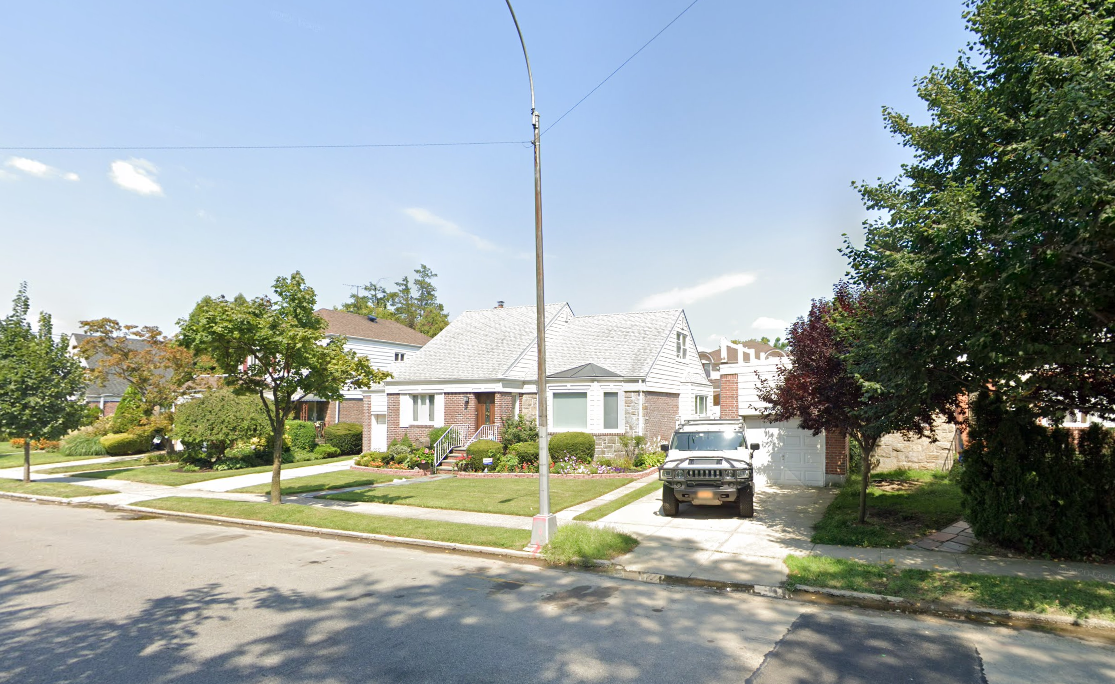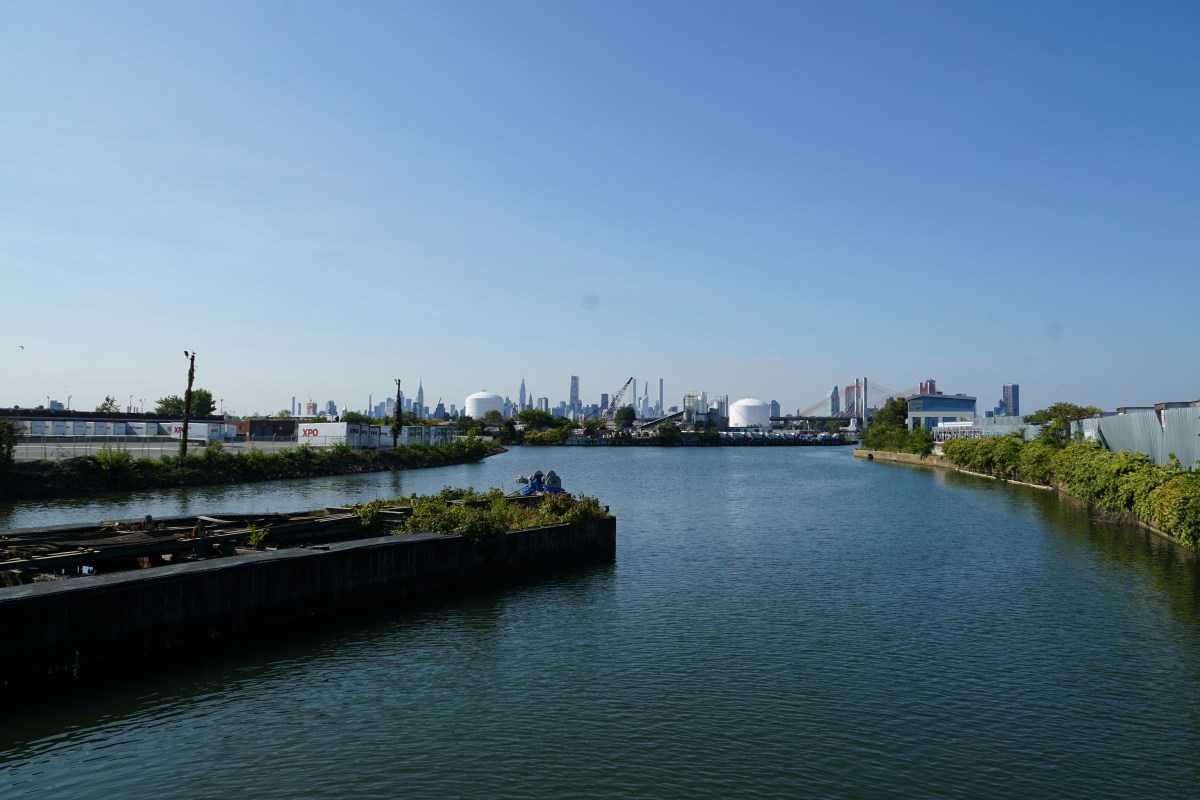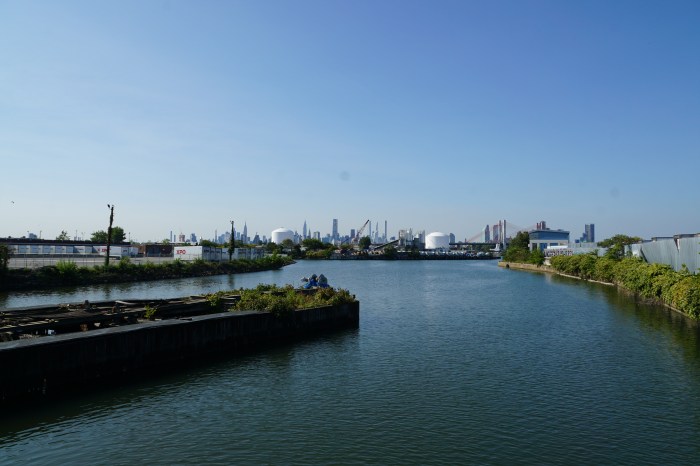Some New York City train stations could find themselves regularly underwater even on sunny days in the coming decades, the MTA said on Wednesday.
The stakes of climate change for North America’s largest transit system are high, particularly for certain segments of the system like Metro-North’s Hudson Line, which runs immediately adjacent to the namesake river. Last year, the line was subject to shutdowns twice owing to extreme weather, first during “thousand-year” flooding over the summer and later due to a mudslide following a storm in the fall.
Over the coming decades, the Hudson Line could frequently find itself underwater, and not just during big storms. During monthly high tides, even on sunny days, the Spuyten Duyvil station on the Hudson Line — at the confluence of the Hudson and Harlem rivers — could be entirely underwater, if sea levels rise by 30 inches as tentatively predicted by the New York City Panel on Climate Change.
“During monthly high tide, sunny days, we can anticipate, without mitigations, high tides that cover the majority of the right of way,” said Eric Wilson, the MTA’s vice president of climate resilience and sustainability planning, during a presentation to the MTA Board Wednesday. “Not quite coming to the top of the third rail.”
“Just to emphasize, this is monthly,” chimed in Jamie Torres-Springer, the head of the MTA’s Construction & Development division. “This is the monthly high tide.”
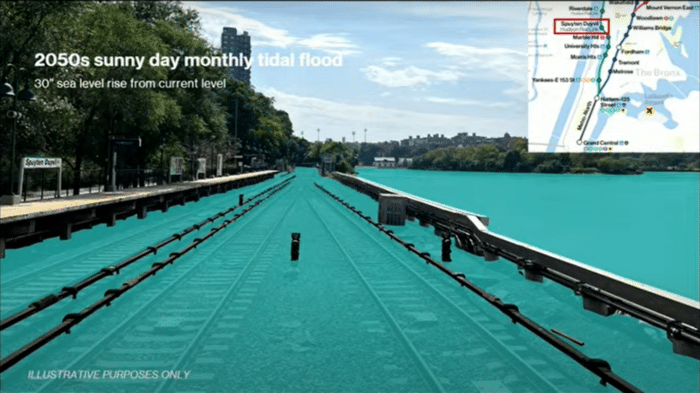
A total of 64 miles of commuter rail track are expected to be subject to monthly tidal flooding by the 2050s, a figure that would increase to 175 miles by the 2080s.
New Yorkers have known for years that the transit system is vulnerable to climate change, and since Superstorm Sandy in 2012 the MTA has endeavored to make its system more resilient. The agency will release a full climate resiliency plan in March and intends to fund climate resiliency projects in its upcoming five-year capital plan.
By the 2050s, forecasters estimate the city will see a threefold increase in severe coastal flooding and twice the number of days with torrential rainfall. That means water will flood the subway system, as it does today when the city’s decades-old sewer lines are overburdened during heavy storms.
The subway system is also vulnerable to extreme heat. Any rider knows waiting on an underground platform during the summer can be a searingly miserable experience.
It will only become more common in the coming decades, with thrice the number of extreme heat days over 90 degrees Fahrenheit expected by the 2050s; not only would that mean more unbearable time waiting on platforms, but it could also have an impact on the functionality of vital equipment.



